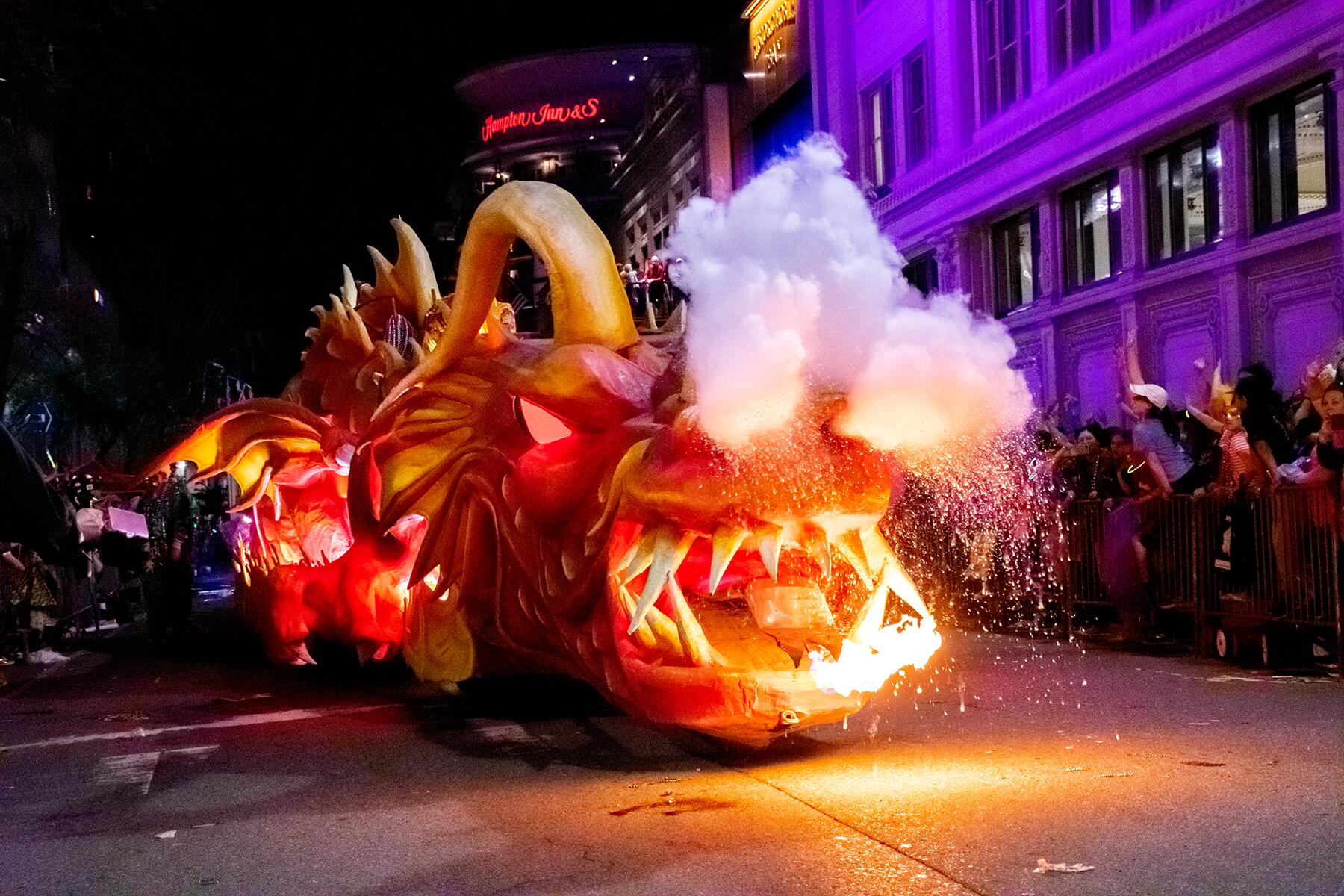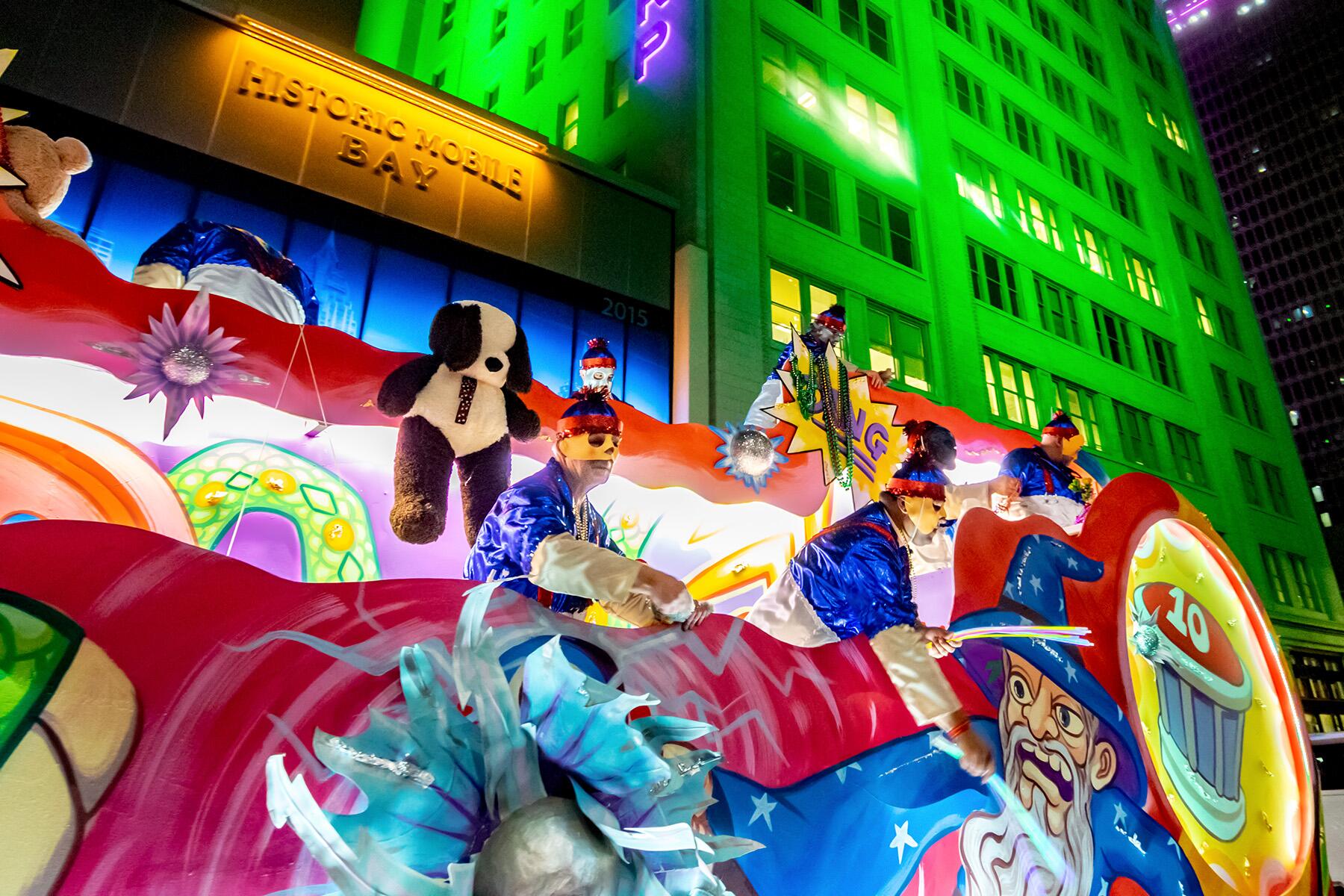In Alabama, Carnival and its festivities aren’t just for Mardi Gras season.
When the yuletide holiday season is over, most Americans retreat into a cloud of darkness (and perhaps, mild depression). The twinkling lights are taken down, the Christmas trees are banished to the curb, and the merriment of a social, festive season is done. The sun goes down before the workday’s end, and the jovial spirit of the holiday season is traded for the harshness of New Year’s resolutions.
But not in the South. In the South, the end of the holiday season makes way for perhaps an even bigger holiday period, the Carnival season. Here, Christmas trees aren’t put away. Instead, they’re adorned with a brilliant collection of purple, green, and gold Mardi Gras decorations, and the party commences (perhaps with even more vigor than before).
The period of Carnival is a longstanding Western Christian festive season that culminates with “Fat Tuesday” (Mardi Gras, in French). It’s a period of celebration before the season of atonement begins on Ash Wednesday.
Although in modern times, New Orleans’ celebrations might technically be more widely known, in Mobile, Alabama, which claims the title of being the Birthplace of Mardi Gras and “America’s Original Carnival Celebration,” celebrating Mardi Gras isn’t just for the single day or week of the year. In fact, it’s not just for Carnival season—it’s an all-year-round lifestyle, and a whole multitude of lingo goes with the season.
Recommended Fodor’s Video
The multi-month celebration of Carnival has been ingrained into the culture of Mobile for more than three centuries, since it began in 1703. Mobile’s Carnival events draw inspiration from its long history, including French, Spanish, British, African, Creole, American, and even Swedish influences. Those interested in learning more about the timeline can check out the city’s Carnival Museum, a wealth of knowledge about the traditions surrounding this history.
For weeks, the streets of downtown Mobile overflow with a feeling of merriment, including live marching band performances, brightly colored and expertly made floats, and tastes of the season. There are more than 40 parades that roll through downtown Mobile and across the greater region beginning in January and continuing through February. Many routes are mapped out online, so people know what to expect.
But while most visitors can see and experience the sparkle of Mardi Gras as it lights up the dark winter night, many might not see the behind-the-scenes work that goes into crafting this Carnival merriment (and madness) every single day of the year in Mobile.

First, there are celebratory balls, which are private gala events held for the members of the mystic society and their guests. They have strict wardrobe requirements and are a festive experience for all. In November, traditionally on Thanksgiving weekend, the Camellia Ball is held when the city’s debutantes of the year are presented.
These celebrations continue through the holidays, and the big parades officially kick off in January and continue through Fat Tuesday. Beginning two Fridays before Mardi Gras, there is usually at least one parade every night, and sometimes multiple parades happen daily.
Building the floats for these parades isn’t just a pastime; it’s oftentimes a professional, paid, full-time job organized and overseen by dedicated engineers, designers, and architects who orchestrate the creation of these moving works of art.
Before a parade rolls each year, float designers have already planned the float themes and done sketches for the following year. Not to be outdone by the festivities of the balls, there are also “barn parties,” which happen throughout the year to showcase the progress of the float building. These events often involve revelry, food, music, and family fun (for day parties) or more adult fun (for evening parties). Like the balls, these events are only open to the mystic society members and those they personally invite to the barn.
Attendees of the parades will commonly find themselves catching a range of flying objects like MoonPies, beads, souvenir cups, and other goodies in an atmosphere filled with pure joy. But if they’re not familiar with the traditions of Mobile, they won’t know these Mobile parades are organized by “societies.” There are 40 societies that have parades that roll through the streets of Mobile during Carnival season and dozens of others that do not parade. Access to the mystic societies is by invitation only, and there is often a waiting list to get into the organization (and an even longer wait to be able to ride on floats during a parade).
You must be a member of a mystic society to be a part of a parade unless you walk in the Joe Cain Day People’s parade. This special event offers anyone access to become a part of the merriment on the Sunday before Mardi Gras.
And there’s “royalty” in the societies, as well as royalty for two major associations in Mobile, the Mobile Carnival Association (MCA) and the Mobile Area Mardi Gras Association (MAMGA), a tradition that dates back to the Mobile Carnival in 1872.
Today, each year, a king and queen are selected by the Carnival Association almost a whole year in advance of Fat Tuesday. The debutantes are the Ladies of the Court, and each Lady selects her escort or Knight. There’s plenty more that goes into the royal court selections, as told by the Mobile Carnival Museum.
Throughout the season, dine on King Cake, a Mardi Gras culinary favorite, and visit restaurants across the city that create eclectic twists on these traditional foods (or offer their own signature food tours).
In Mobile, Carnival and its festivities aren’t just for Mardi Gras season. The work that goes into organizing the events—including the parades, the float building, and the galas—is often planned years in advance and is more of a lifestyle than a pastime. It’s a tradition that inspires celebration during a time that might seem colder and darker usual, but a few strings of beads and a slice of King Cake can spark enough joy and bring together this entire community.






